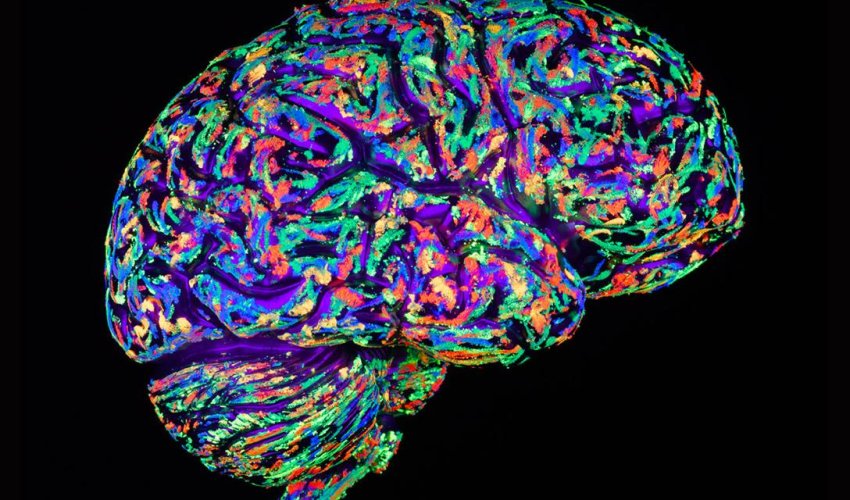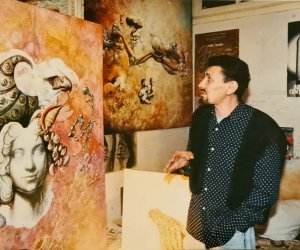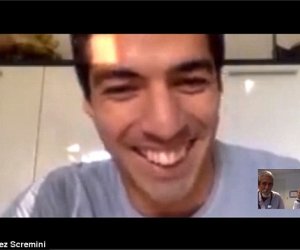The brain's miracle superpowers of self-improvement

For years she had tried to be the perfect wife and mother but now, divorced, with two sons, having gone through another break-up and in despair about her future, she felt as if she’d failed at it all, and she was tired of it. On 6 June 2007. Debbie Hampton, of Greensboro, North Carolina, took an overdose of more than 90 pills – a combination of 10 different prescription drugs, some of which she’d stolen from a neighbour’s bedside cabinet. That afternoon, she’d written a note on her computer: "I’ve screwed up this life so bad that there is no place here for me and nothing I can contribute.” Then, in tears, she went upstairs, sat on her bed, swallowed her pills with some cheap Shiraz and put on a Dido CD to listen to as she died. As she lay down, she felt triumphant.
But then she woke up again. She’d been found, rushed to hospital, and saved. "I was mad,” she says. "I’d messed it up. And, on top of that, I’d brain-damaged myself.” After Debbie emerged from her one-week coma, her doctors gave her their diagnosis: encephalopathy. "That’s just a general term which means the brain’s not operating right,” she says. She couldn’t swallow or control her bladder, and her hands constantly shook. Much of the time, she couldn’t understand what she was seeing. She could barely even speak. "All I could do was make sounds,” she says. "It was like my mouth was full of marbles. It was shocking, because what I heard from my mouth didn’t match what I heard in my head.” After a stay in a rehabilitation centre, she began recovering slowly. But, a year in, she plateaued. "My speech was very slow and slurred. My memory and thinking was unreliable. I didn’t have the energy to live a normal life. A good day for me was emptying the dishwasher.”
It was around this time that she tried a new treatment called neurofeedback. She was required to have her brain monitored while playing a simple Pac-Man-like game, controlling movements by manipulating her brain waves. "Within 10 sessions, my speech improved.” But Debbie’s real turnaround happened when her neurofeedback counsellor recommended a book: the international bestseller The Brain that Changes Itself by Canadian psychotherapist Norman Doidge. "Oh my God,” she says. "For the first time it really showed me it was possible to heal my brain. Not only that it was possible, that it was up to me.”
After reading Doidge’s book, Debbie began living what she calls a "brain-healthy” life. That includes yoga, meditation, visualisation, diet and the maintenance of a positive mental attitude. Today, she co-owns a yoga studio, has written an autobiography and a guide to "brain-healthy living” and runs the website thebestbrainpossible.com. The science of neuroplasticity, she says, has taught her that, "You’re not stuck with the brain you’re born with. You may be given certain genes but what you do in your life changes your brain. And that’s the magic wand.” Neuroplasticity, she says, "allows you to change your life and make happiness a reality. You can go from being a victim to a victor. It’s like a superpower. It’s like having X-ray vision.”
‘Series of miracles’
Debbie’s not alone in her enthusiasm for neuroplasticity, which is what we call the brain’s ability to change itself in response to things that happen in our environment. Claims for its benefits are widespread and startling. Half an hour on Google informs the curious browser that neuroplasticity is a "magical” scientific discovery that shows that our brains are not hard-wired like computers, as was once thought, but like "Play-Doh” or a "gooey butter cake”. This means that "our thoughts can change the structure and function of our brains” and that by doing certain exercises we can actually, physically increase our brain’s "strength, size and density”.
Neuroplasticity is a "series of miracles happening in your own cranium” that means we can be better salespeople and better athletes, and learn to love the taste of broccoli. It can treat eating disorders, prevent cancer, lower our risk of dementia by 60% and help us discover our "true essence of joy and peace”. We can teach ourselves the "skill” of happiness and train our brains to be "awesome”. And age is no limitation: neuroplasticity shows that "our minds are designed to improve as we get older”. It doesn’t even have to be difficult. "Simply by changing your route to work, shopping at a different grocery store, or using your non-dominant hand to comb your hair will increase your brain power.” As the celebrity alternative-medicine guru Deepak Chopra has said, "most people think that their brain is in charge of them. We say we are in charge of our brain.”
Debbie’s story is a mystery. The techniques promising to change her brain via an understanding of the principles of neuroplasticity have clearly had tremendous positive effects for her. But is it true that neuroplasticity is a superpower, like X-ray vision? Can we really increase the weight of our brain just by thinking? Can we lower our risk of dementia by 60%? And learn to love broccoli?
It’s hard, for the non-scientist to understand what exactly neuroplasticity is and what its potential truly is. "I’ve seen tremendous exaggeration,” says Greg Downey, an anthropologist at Macquarie University and co-author of the popular blog Neuroanthropology. "People are so excited about neuroplasticity they talk themselves into believing anything.”
Gloomy prognosis
For many years, the consensus was that the human brain couldn’t generate new cells once it reached adulthood. Once you were grown, you entered a state of neural decline. This was a view perhaps most famously expressed by the so-called founder of modern neuroscience Santiago Ramon y Cajal. After an early interest in plasticity, he became sceptical, writing in 1928, "In adult centres the nerve paths are something fixed, ended, immutable. Everything may die, nothing may be regenerated. It is for the science of the future to change, if possible, this harsh decree.” Cajal’s gloomy prognosis was to rumble through the 20th Century.
Although the notion that the adult brain could undergo significant positive changes received sporadic attention, throughout the 20th Century, it was generally overlooked, as a young psychologist called Ian Robertson was to discover in 1980. He’d just begun working with people who had had strokes at the Astley Ainslie Hospital in Edinburgh, and found himself puzzled by what he was seeing. "I’d moved into what was a new field for me, neuro-rehabilitation,” he says. At the hospital, he witnessed adults receiving occupational therapy and physiotherapy. Which made him think… if they’d had a stroke, that meant a part of their brain had been destroyed. And if a part of their brain had been destroyed, everyone knew it was gone forever. So how come these repetitive physical therapies so often helped? It didn’t make sense. "I was trying to get my head around, what was the model?” he says. "What was the theoretical basis for all this activity here?” The people who answered him were, by today’s standards, pessimistic.
"Their whole philosophy was compensatory,” Robertson says. "They thought the external therapies were just preventing further negative things happening.” At one point, still baffled, he asked for a textbook that explained how it all was supposed to work. "There was a chapter on wheelchairs and a chapter on walking sticks,” he says. "But there was nothing, absolutely nothing, on this notion that the therapy might actually be influencing the physical reconnection of the brain. That attitude really went back to Cajal. He really influenced the whole mindset which said that the adult brain is hardwired, all you can do is lose neurons, and that if you have brain damage all you can do is help the surviving parts of the brain work around it.”
But Cajal’s prognosis also contained a challenge. And it wasn’t until the 1960s that the "science of the future” first began to rise to it. Two stubborn pioneers, whose tales are recounted so effectively in Doidge’s bestseller, were Paul Bach-y-Rita and Michael Merzenich. Bach-y-Rita is perhaps best known for his work helping blind people ‘see’ in a new and radically different way. Rather than receiving information about the world from the eyes, he wondered if they could take it in in the form of vibrations on their skin. They’d sit on a chair and lean back on a metal sheet. Pressing up against the back side of that metal sheet were 400 plates that would vibrate in accord with the way an object was moving. As Bach-y-Rita’s devices became more sophisticated (the most recent version sits on the tongue), congenitally blind people began to report having the experience of ‘seeing’ in three dimensions. It wasn’t until the advent of brain-scanning technology that scientists began to see evidence for this incredible hypothesis: that information seemed to be being processed in the visual cortex. Although this hypothesis is yet to be firmly established, it seems as if their brains had rewired themselves in a radical and useful way that had long been thought impossible.
(BBC)
www.ann.az
Similar news
Similar news
Latest news 
More news 



































 Photo
Photo 



 Video
Video 

